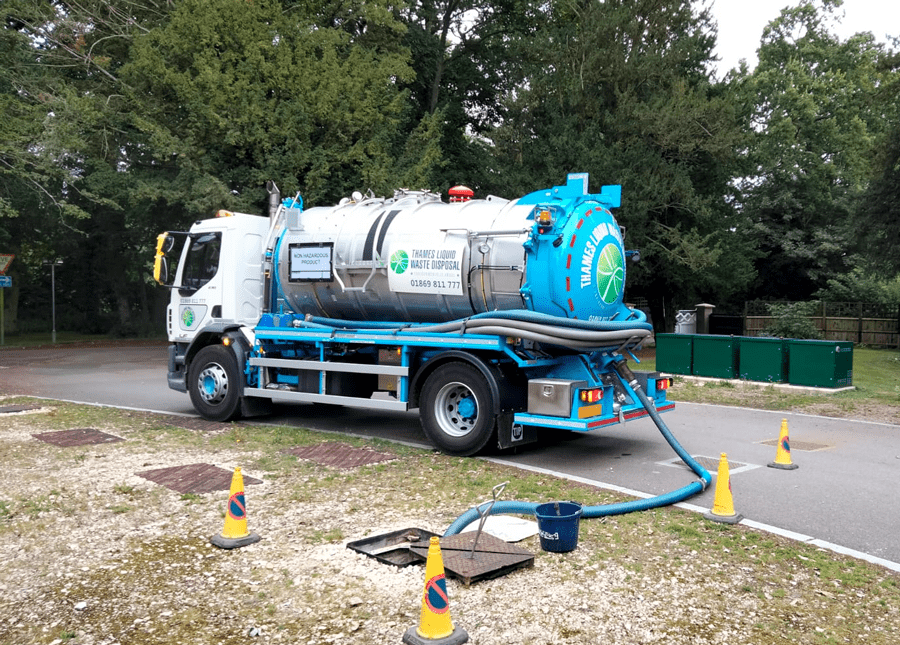The smart Trick of Reclaim Waste That Nobody is Talking About
The smart Trick of Reclaim Waste That Nobody is Talking About
Blog Article
The Only Guide for Reclaim Waste
Table of ContentsReclaim Waste - QuestionsExamine This Report about Reclaim WasteThe Definitive Guide to Reclaim WasteThe Greatest Guide To Reclaim WasteReclaim Waste - An Overview
Check out the types, occurrences, and forms of fluid waste. Domestic sewage waste refers to the waste and items from a household septic container. This sort of waste is created by humans in residences, institutions, and other structures. This only includes septic systems that have a drain area. The proper monitoring and disposal of domestic sewage waste need fluid waste to be transferred to a sewer treatment plant where the correct techniques and equipment are put on purify and throw away waste.
Business waste typically consists of potential dangers, such as combustible materials or a blend of fluid and solid waste products, and needs an advanced and detailed disposal process. The disposal of business waste usually entails the filtration of waste before transportation to make sure secure and proper disposal. Industrial waste is produced from results and drainage of commercial procedures and production.
This kind of waste can not utilize the very same sewer monitoring transportation or processes as septic or commercial liquids. The hazardous waste administration procedure needs the examination and screening of fluid waste prior to it undertakes the disposal procedure (liquid waste removal melbourne). Overflow waste is the fluid waste that comes from overflow and excess stormwater in extremely inhabited areas or cities
Overflow waste can create contamination and flooding if not dealt with appropriately. Guaranteeing correct waste management can protect against calamities and minimize environmental injury.
The Facts About Reclaim Waste Revealed
Contact PROS Solutions today to find out about our waste management and disposal services and the correct methods to take care of the liquid waste you create.
(https://www.easel.ly/browserEasel/14532007)Do you recognize what occurs to your water when you disengage, purge the bathroom or drain pipes the washing machine? No? Well, it deserves understanding. This supposed 'wastewater' is not only an important source however, after therapy, will be launched to our land, waterways or the sea. Utilized water from toilets, showers, bathrooms, kitchen sinks, washings and industrial procedures is called wastewater.

water utilized to cool equipment or tidy plant and devices). Stormwater, a type of wastewater, is drainage that flows from agricultural and city areas such as roof coverings, parks, yards, roadways, paths and seamless gutters into stormwater drains pipes, after rain. Stormwater streams unattended directly to neighborhood creeks or rivers, eventually getting to the ocean.
The Ultimate Guide To Reclaim Waste
In Queensland, a lot of wastewater is treated at sewer therapy plants. Wastewater is moved Read More Here from domestic or industrial sites via a system of sewers and pump stations, referred to as sewerage reticulation, to a sewage treatment plant. City governments build, keep and operate most sewer therapy plants. Operators are accredited under the Environmental Protection Act 1994 to release treated wastewater at an appropriate ecological criterion right into rivers.
The Department of Natural Resources advises city governments concerning handling, operating and maintaining sewage systems and therapy plants. In unsewered areas, neighborhood federal governments might need householders to mount specific or family sewage therapy systems to deal with residential wastewater from commodes, kitchen areas, washrooms and washings. The Department of Natural Resources authorises the usage of family systems when they are shown to be effective.
Most stormwater obtains no therapy. In some new subdivisions, therapy of some stormwater to eliminate trash, sand and gravel has actually started using gross toxin traps. Wastewater therapy happens in four phases: Removes strong matter. Larger solids, such as plastics and various other objects mistakenly discharged to sewage systems, are gotten rid of when wastewater is passed with screens.
Utilizes tiny living organisms understands as micro-organisms to damage down and get rid of staying liquified wastes and great particles. Micro-organisms and wastes are integrated in the sludge.
The Facts About Reclaim Waste Revealed
Nutrient elimination is not readily available in all sewer therapy plants due to the fact that it calls for pricey specialised tools. It is becoming more common in Queensland. Clear fluid effluent generated after therapy might still have disease-causing micro-organisms. If this effluent is launched right into waterways such as rivers or the sea, the micro-organisms will at some point pass away out.

Many wastewater flows right into the sewage system. Under the Act, regional governments carry out approvals and permits for environmentally pertinent activities (Periods) including wastewater releases that could have a local influence.
Reclaim Waste Fundamentals Explained
Tracking supplies accurate details regarding water high quality and can verify that permit conditions are being satisfied. The info acquired through surveillance offers the basis for making water high quality decisions.
Report this page